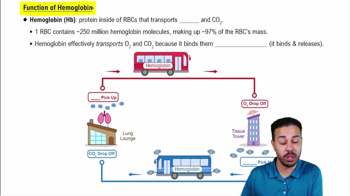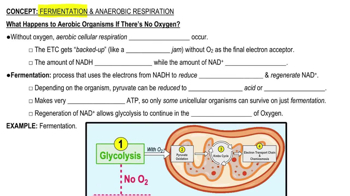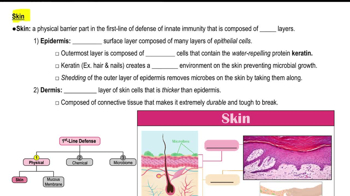Mark the following statements as true or false. If a statement is false, correct it to make a true statement.
Merkel cells produce the pigment melanin.
 Verified step by step guidance
Verified step by step guidance Verified video answer for a similar problem:
Verified video answer for a similar problem:



 1:03m
1:03mMaster Introduction to Cells of the Epidermis with a bite sized video explanation from Bruce Bryan
Start learning